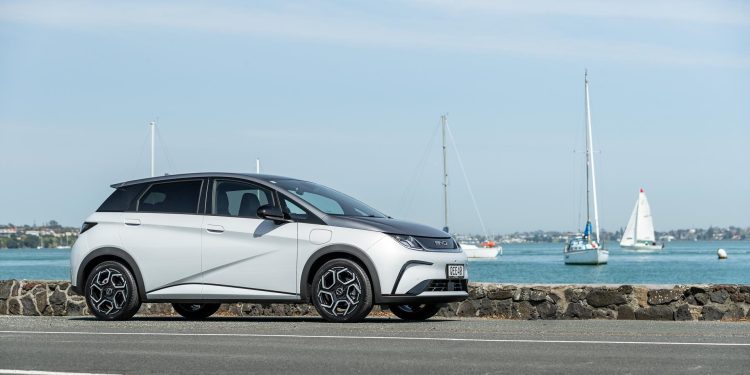2023 BYD Dolphin Extended review
Words: Kyle Cassidy | Photos: Isaac Western
The BYD range doubles with the introduction of the Dolphin. Does it have the goods to make the competition flip out?
The arrival of the BYD Dolphin will give this hard charging electrified brand twice as many models to offer those interested in new energy wares.
BYD now has 15 dealers nationwide, and more coming as established car dealers flip allegiances, one yard pulling down its Hyundai and Isuzu signs recently to join the fold.
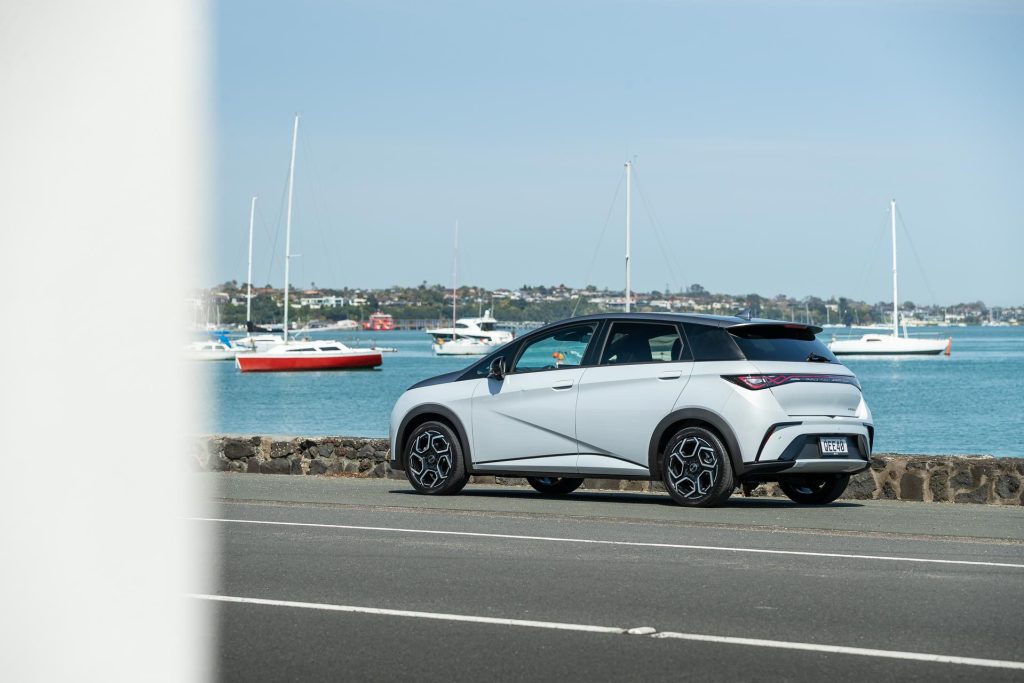
And while BYD has only had one model to sell for the past 12 months, year-to-date August, the brand is in 13th place overall in the market and the BYD Atto 3 is the seventh best selling passenger model. Now its range expands with the smaller Dolphin.
At $55,990, a cheapie it ain’t but it does qualify for the $7015 rebate, while it lasts.
The forward orders from private buyers are overwhelmingly for the Extended (as in range) model, and rightly so. While we haven’t tried the Standard, the Extended’s $6K premium seems well worth it.
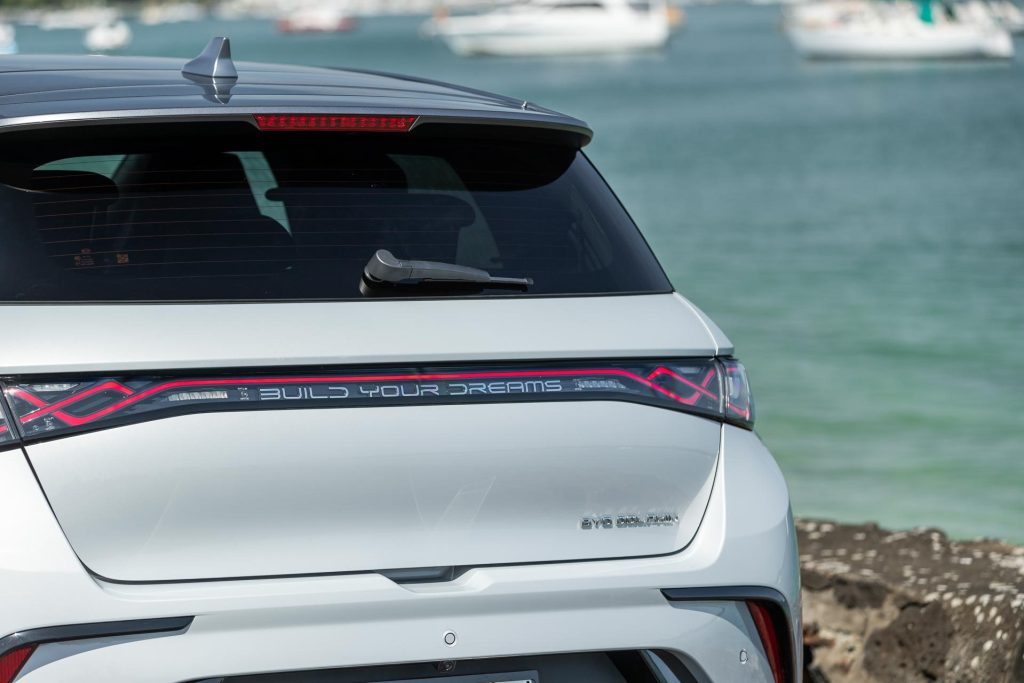
While the two models have virtually the same high spec, the extras buy a superior powertrain and greater range. Whereas the Standard model gets a 44.9kWh battery and a 70kW/180Nm motor, the Extended has a 60.48kWh power supply and a 150kW/310Nm motor.
And the range claim jumps from 340km to 427km. The Extended also gains a multilink rear end while the Standard uses a torsion beam. Other differences include larger 17-inch alloys and two-tone paint.
You get the choice of grey and black or white and grey or you can pay $1899 for blue and grey (with a blue interior) or pink and grey with a matching pink cabin. A must for Barbie fans.
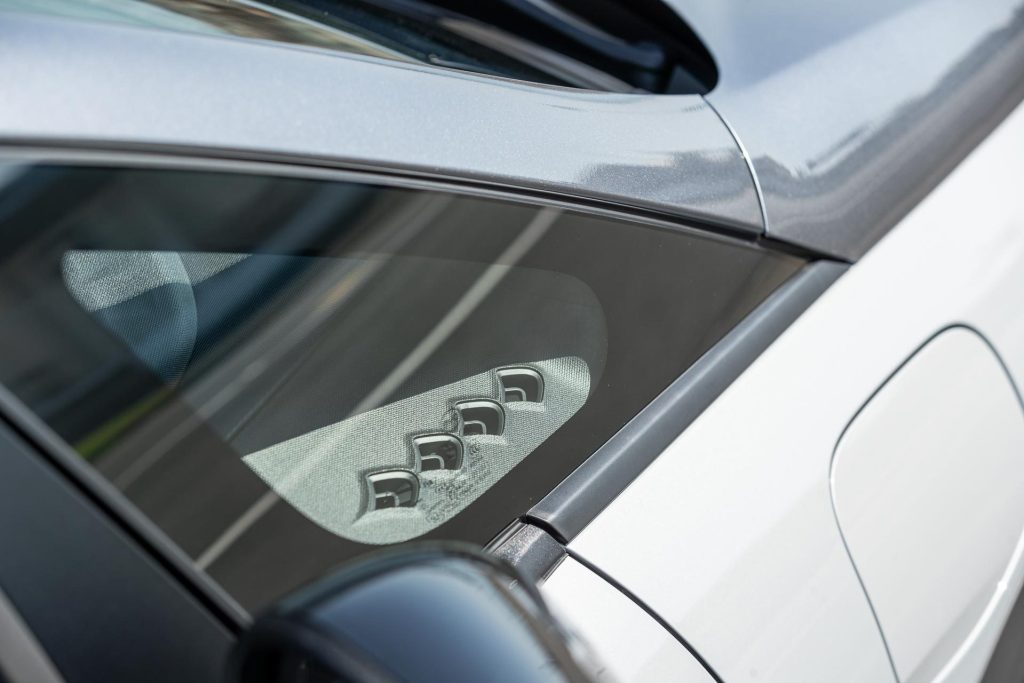
Dolphin vs Atto 3
The pricing isn’t far off the $59,990 Atto 3 Extended, with which it shares its platform, motor and battery, and is actually more expensive than the Standard at present as that is on run-out pricing.
The Atto 3 is bigger (about 150mm longer and 100mm wider), but the wheelbase is only 20mm longer in the Atto 3 meaning not much more rear space, though the boot is bigger (440L v 345). The main difference is the Atto 3 is a small SUV with its additional ground clearance (175 v 130mm), whereas the Dolphin is a five-door hatch.
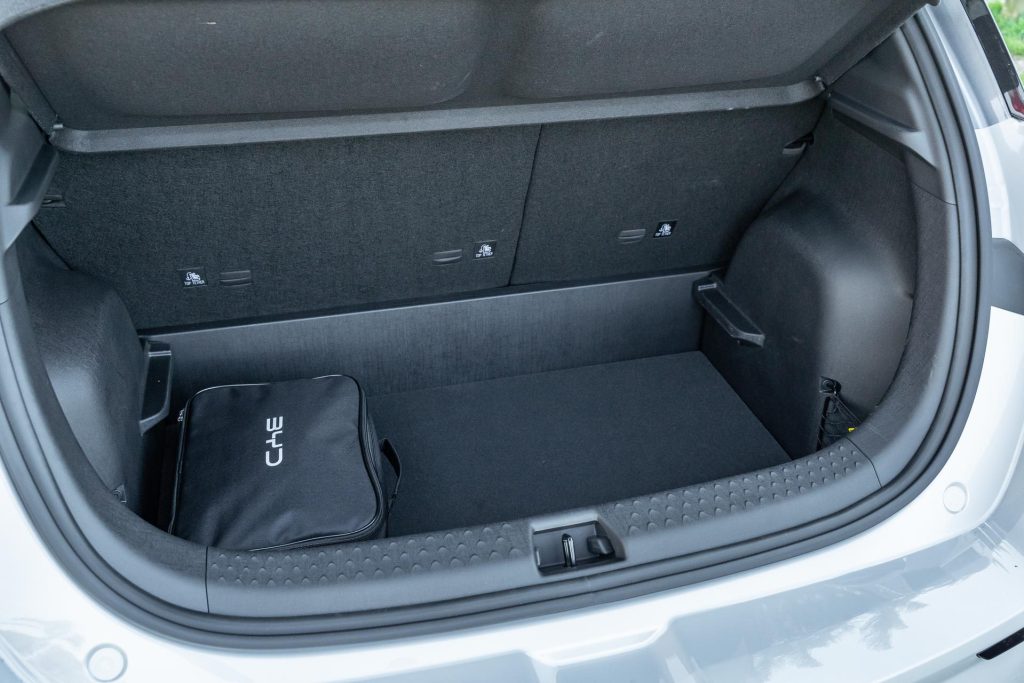
BYD NZ is talking-up the Dolphin’s chances, not just against the likes of the MG4 which most see as its natural competition, but also more established conventional hatch models like the Toyota Corolla and Volkswagen Golf. BYD sees it as a company car, with orders in place from government departments.
It competes quite favourably on price with those mentioned, once the rebate has been claimed that is. And also on the total cost of ownership equation, as gas prices look to remain stubbornly high. However, when the rebate money is gone, the goal posts will shift and conspire against it.
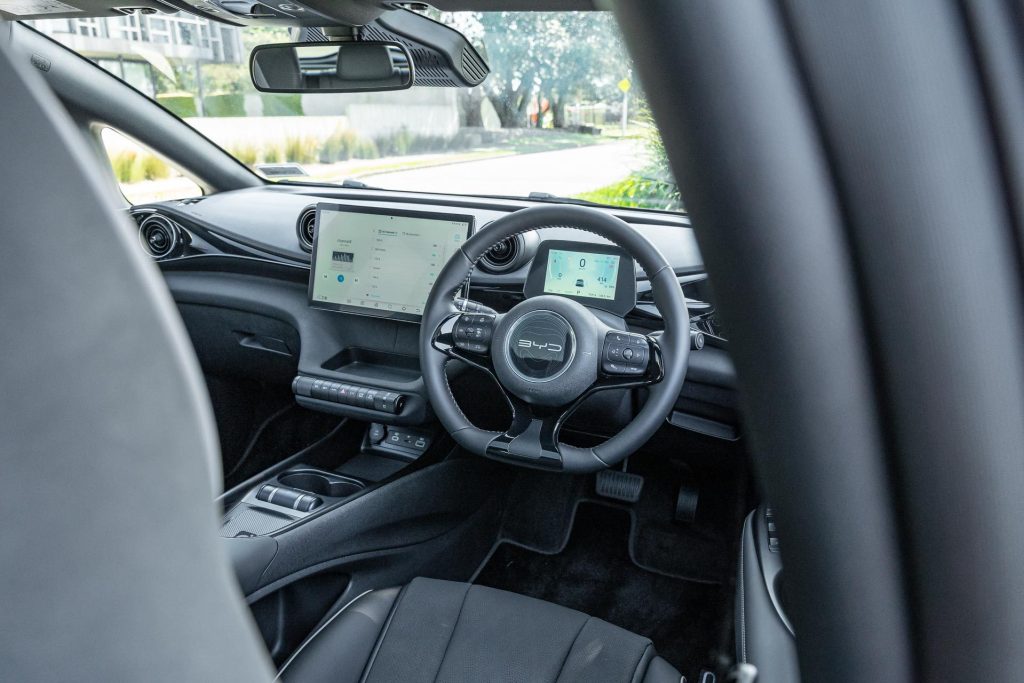
The Dolphin has BYD’s Blade battery tech (less susceptible to thermal runaway in the event of an accident, so they tell us) with its lithium-ion phosphate chemistry promising less degradation over time. It means more of its potential range will still be intact come time to sell, which BYD NZ says should translate to better resale values for its customers.
More conventional
Compared with the Atto3, the Dolphin’s interior looks almost conventional. It’s less confronting for sure, the colour scheme more palatable. Most of it is soft in the right places, save for the hard door tops, and is well made.
The big screen (the master controller for most functions) can do its swivelling party trick here too, and can be viewed in either portrait or landscape orientation. It always motors back to the former when you switch off.
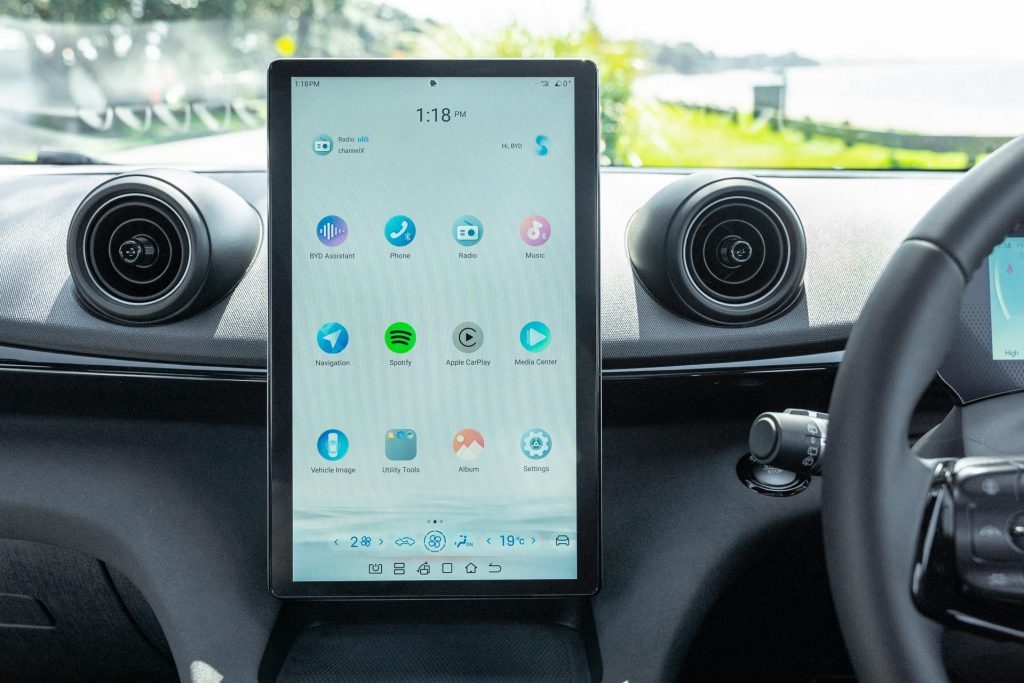
The Dolphin has a wee storage spot beneath the screen, a perfect size for a cream donut. But on start up, the screen then motors back into portrait and squishes your donut. You’ve been warned.
The gear selector ‘falls to hand’ nicely, sited as it is along the row of buttons below the screen. The rocker switch is easy to use, though those with long legs might inadvertently knock the Park button on the end of the switch row when stopped at the lights.
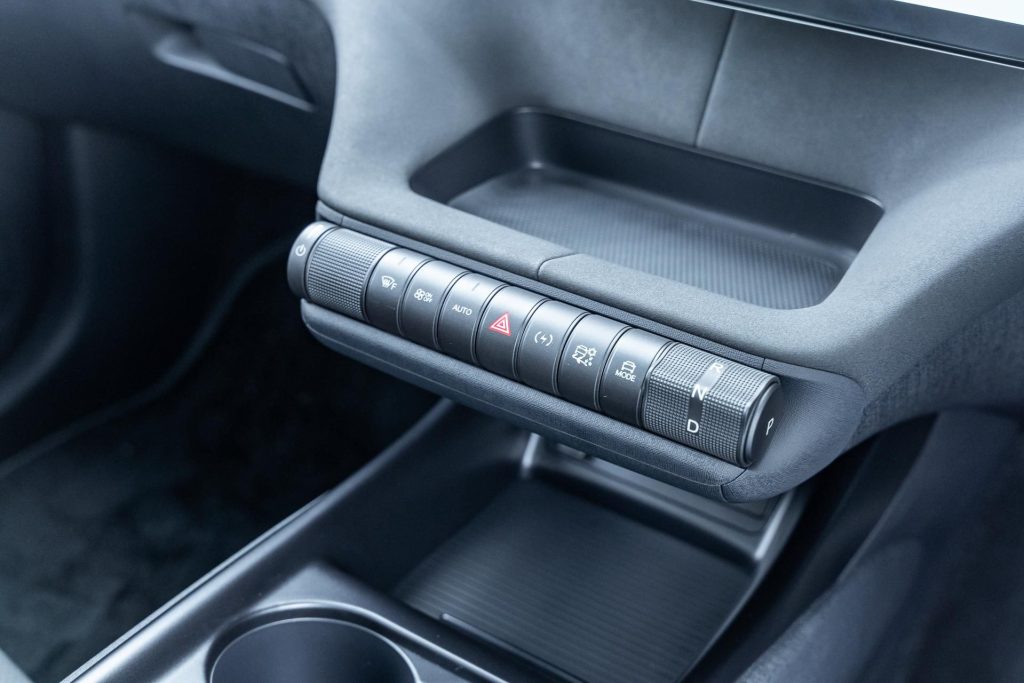
And then you’re wondering why you’re not moving when you release the brake. Like putting your donut in the wrong place, you’ll likely only do this once. Rear seat passengers do alright for room, a flat floor helping, and the boot is reasonable too, once you lower the floor right down.
Dolphin riding
There are two brake regen settings, Standard adding only minimal retardation, and Strong not much more. At least at urban speeds that is. It’s more noticeable at motorway and highway rates. The brake pedal feel is okay, and there are two settings for this as well.
While not as easy to switch up as the regen setting (it requires you to delve into the menus on the touchscreen) the Sport mode feels better above 80km/h, giving the pedal a more immediate action, and making the system feel stronger as a result.
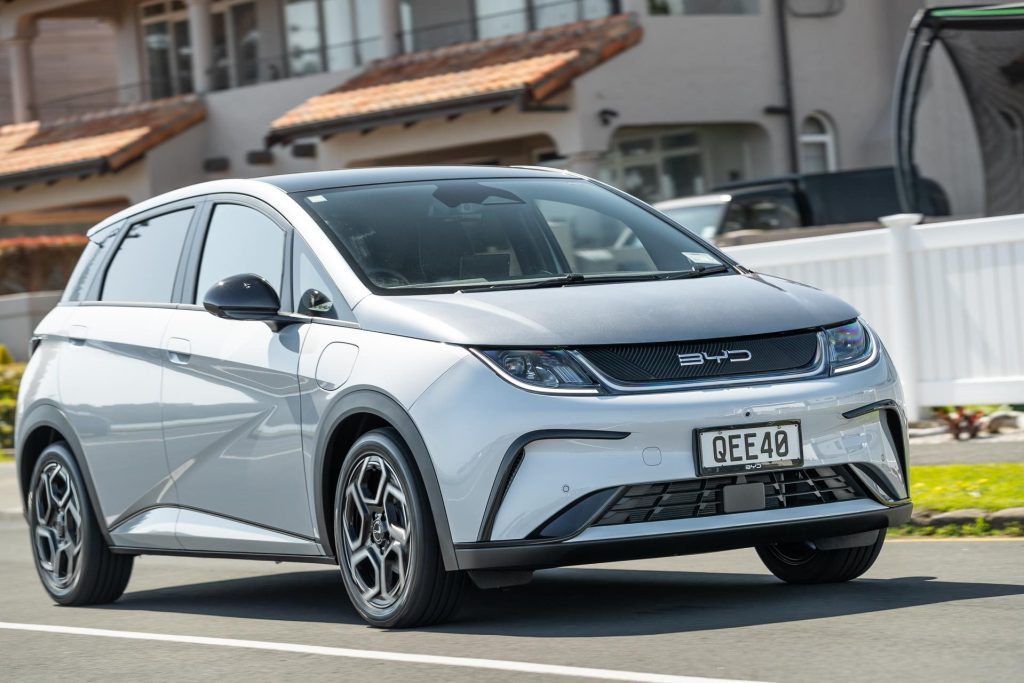
The Standard mode feels spongy by comparison. Yet it’s better at urban pace, less snatchy and more in line with the Dolphin’s comfort nature.
This trait extends to the suspension tune, which delivers a thoroughly good ride quality for a car of this size. Road noise is minimal too, the motor muted. And so that makes the low speed warning sound this emits below 30km/h even more intolerable. However, a recent OTA update has included the option to silence this howling.
The steering is light weighted, and the turning circle is commuter friendly. While the A and C pillars are a little chunky, the excellent camera system compensates with an every-which-way view.
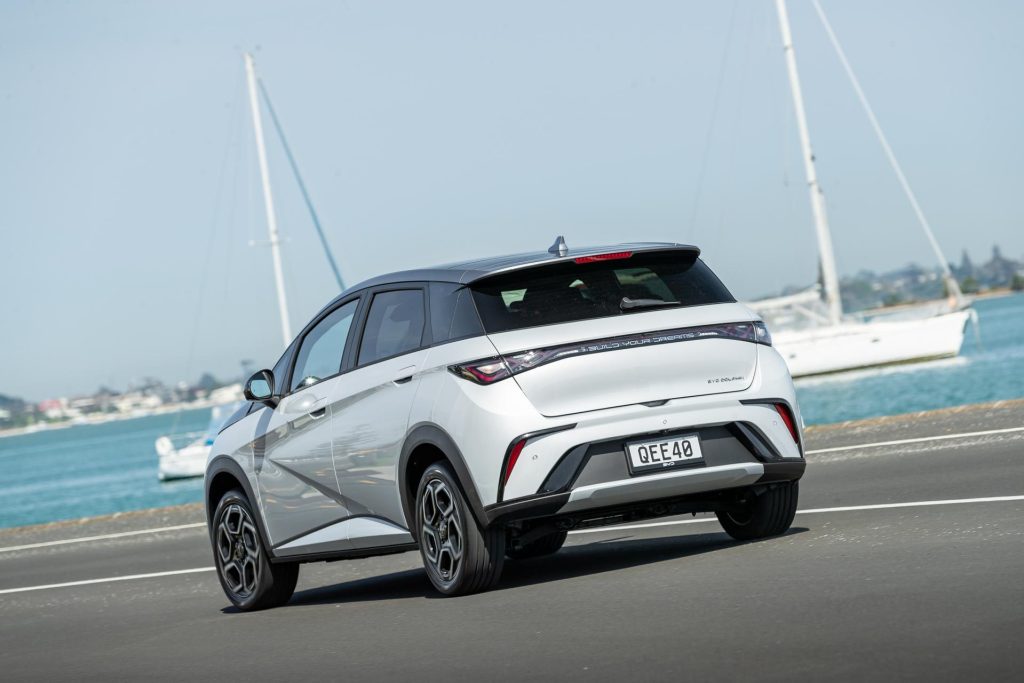
The seats are well formed, and though they lack lumbar support, are powered on both sides of the cabin, and heated too. The faux leather isn’t bad, and seats are set at a good height to ease entry.
Being front-wheel drive, the tyres can chirp when deploying the full 310Nm, though the traction control is quick to restore calm, and it gets the power grounded well. The three drive modes (Eco, Normal and Sport) do the usual thing, and it feels quite quick in Sport, hitting 100 in 7.0sec, as they state.
That’s 0.3sec quicker than the same-size MG4 64kWh. But not quite as quick as the more powerful Cupra Born (6.7sec). However, it is also $22k cheaper while being much better specified with a longer potential range.
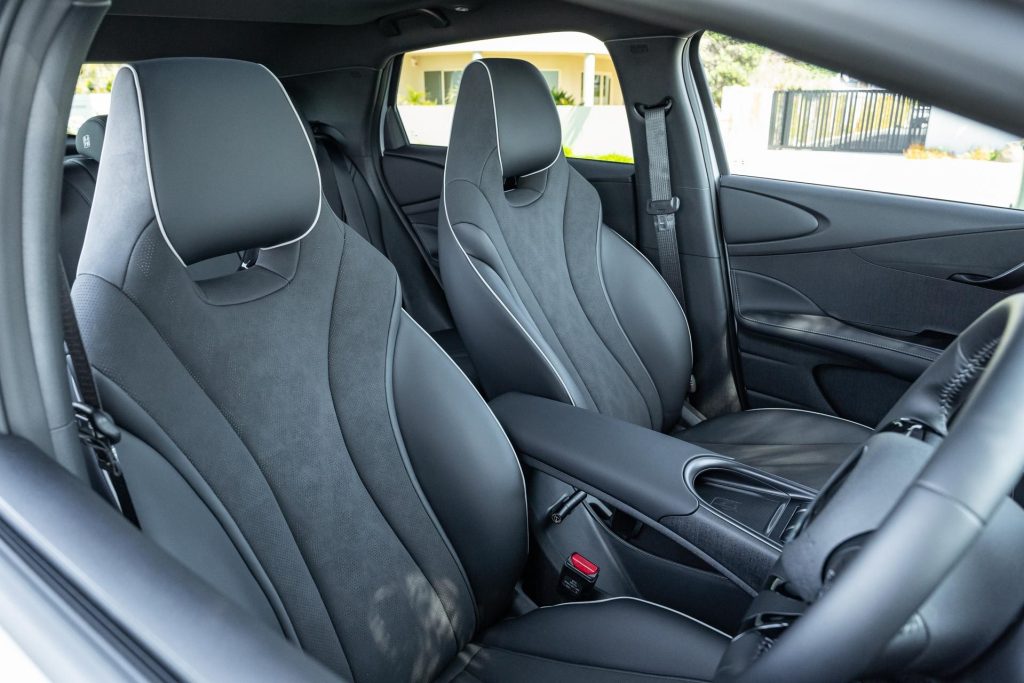
Dolphin doesn’t have the hot hatch persona of the Cupra in the curves. The softly-softly suspension eases the bumps on roughed up highways but also equates to a fair amount of roll in the bends. Occasionally, it’s enough to rouse the attention of the ESP as the rear end gets a bit light.
The Linglong Comfort rubber is quiet, but not the last word in outright grip. Dolphin’s steering does better in the Sports mode, the added weight guiding it around the corner more accurately.
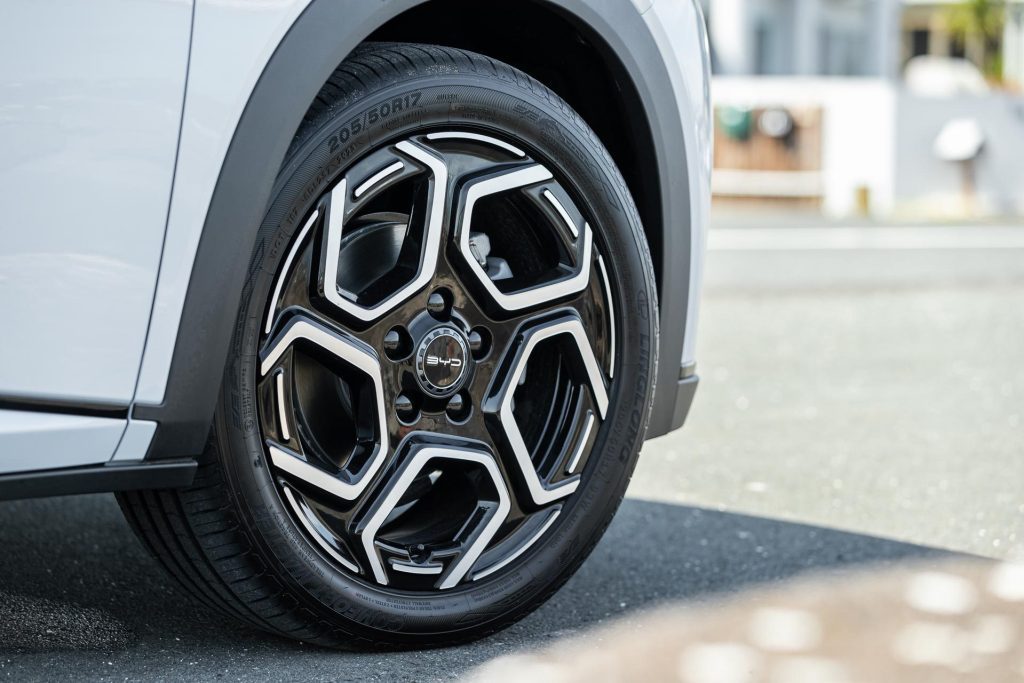
How far?
BYD states a WLTP range of 427km, while the DTE when we picked up this fully charged car was showing 499km. The efficiency recorded on the standardised WLTP test is 15.9kWh/100km, while our consumption registered 15kWh/100km.
It can rejuice at up to 80kW on a DC fast charger, while an overnight charge on the supplied trickle charger (12hr at a rate of 1.2kW) added 20 per cent to the battery (40 to 60 per cent).
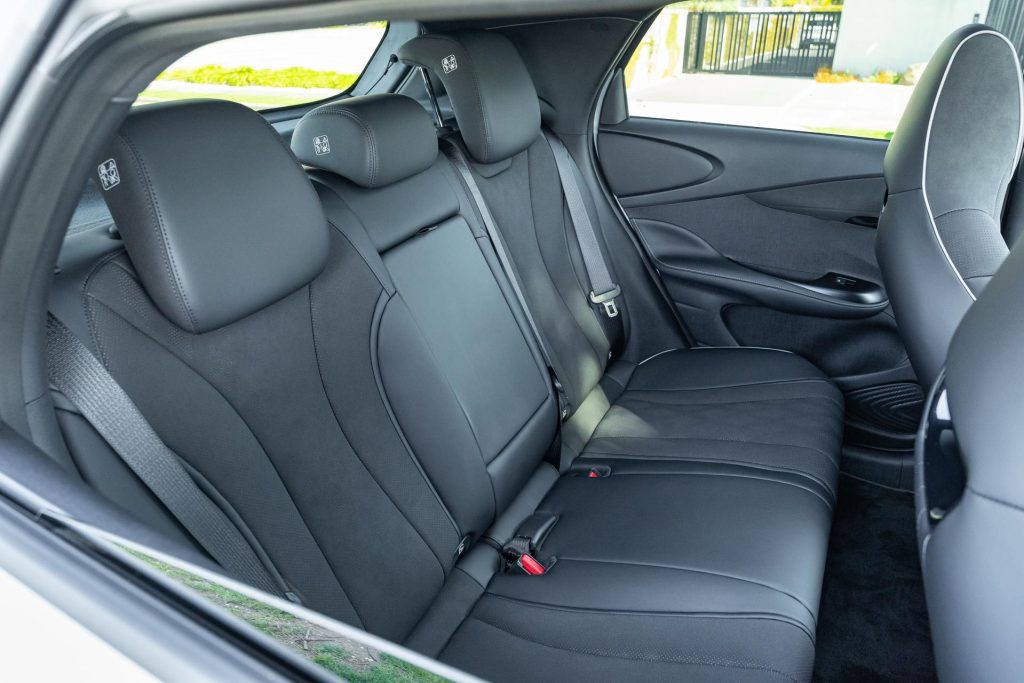
Safe too?
The Dolphin’s arrival in export countries was delayed to ensure the car was fitted with the right safety systems to gain it a five-star crash rating, although that’s yet to be confirmed.
The ADAS systems aren’t too irksome, there’s some gentle bonging every time you exceed the speed limit by a couple of km/h, though the lane keeping does wrestle the wheel away from you at times.
And the centring function of the active cruise needs smoothing. BYD NZ admits its ADAS could be improved for local roads, but getting technicians into NZ has proved a problem with the Visa system. These, along with other systems can be updated OTA.
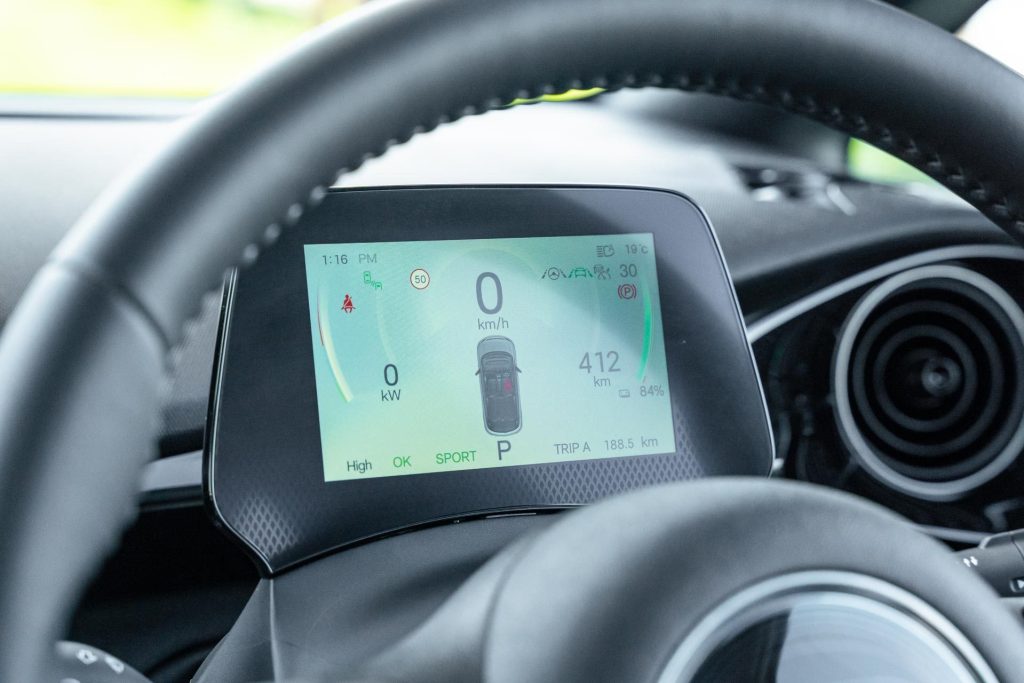
There is a V2L function and BYD throws in the discharge adapter (a two plug power board on the end of a 5m cable) as well.
Simply plug this into the AC charge port, and you have two power points at your disposal, no need to fiddle in the menus to get it started. We rigged up the air fryer and cooked some chips for lunch while out on the photoshoot.
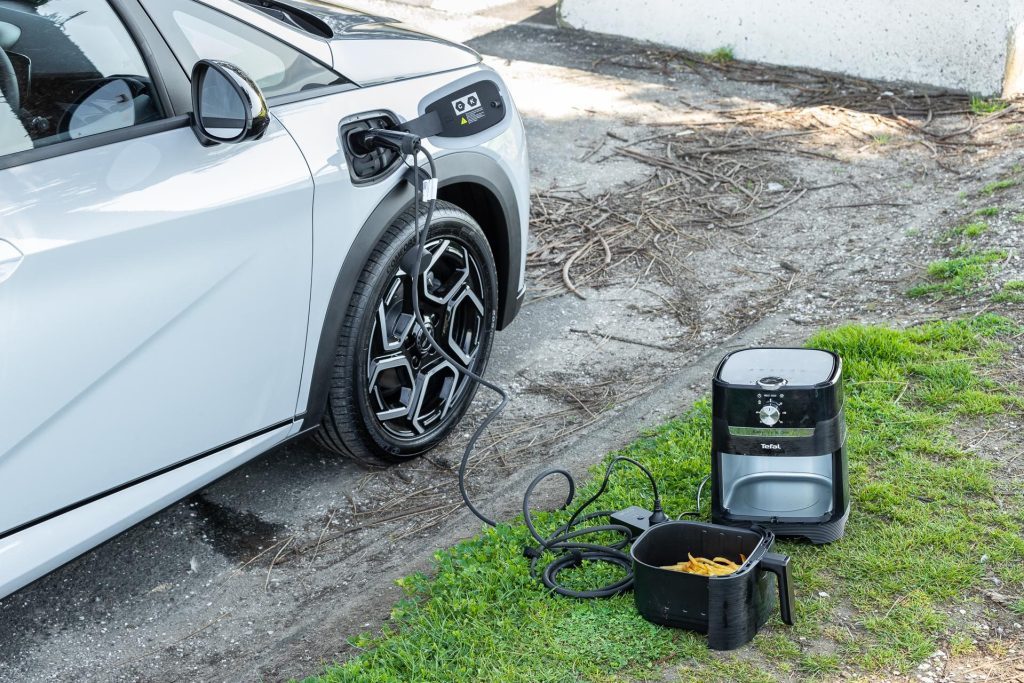
Worthy?
While not as affordable as the MG4, or quite as dynamic, it’s a good all rounder with thoroughly decent quality, a high fit out and a comfortable character.
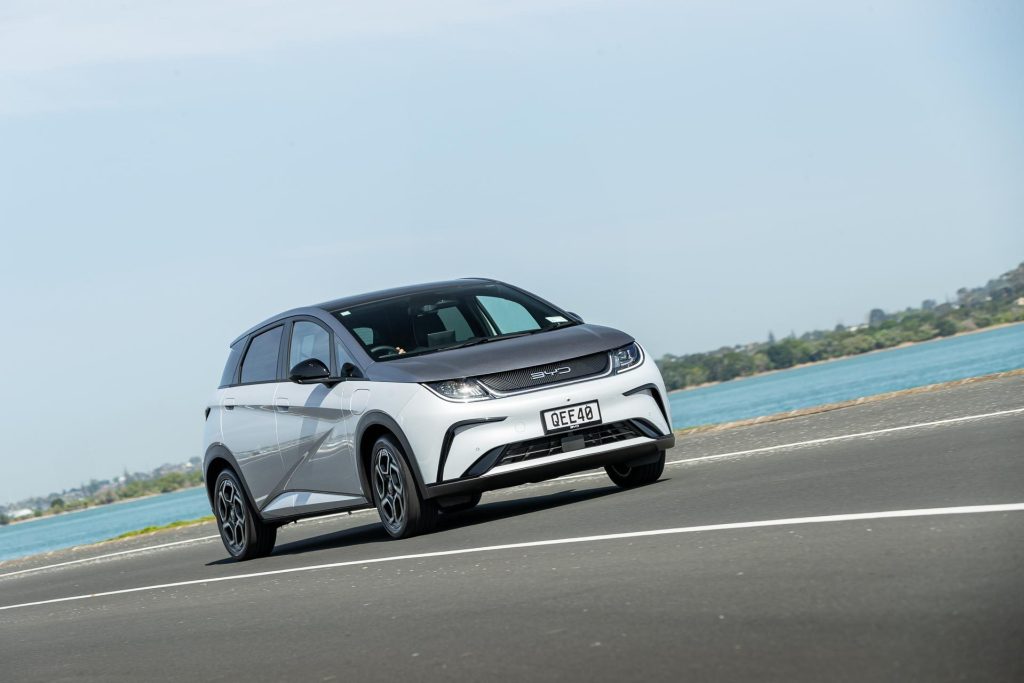
The benefits of the LFP battery need to be considered too. Best get in before the rebate sweetener vanishes, which will take the gloss off all EVs below the $80k mark.
| Model | BYD Dolphin Extended |
| Price | $55,990 |
| Clean Car Discount | Rebate – $7,015 |
| Motor | 150kW / 310Nm |
| Battery | 60.5kWh net |
| Range | 427km |
| Drivetrain | single-speed auto, FWD |
| Energy Use | 15.9kWh/100km |
| C02 Output | 0g/km |
| 0-100km/h | 7.05sec |
| 80-120km/h | 4.46sec (130m) |
| 100-0km/h | 37.86m |
| Stability systems | ABS, ESP, TV |
| Safety | AEB, ACC, BSM, LDW, RCTA, ALK, AHB |
| Luggage capacity | f-345L, r-1310L |
| Tow rating | 500kg |
| Service intervals | 12 months, 20,000km |
| Warranty | 6yrs, 150,000km |
| ANCAP rating | Not yet rated |
| Weight | 1658kg |


